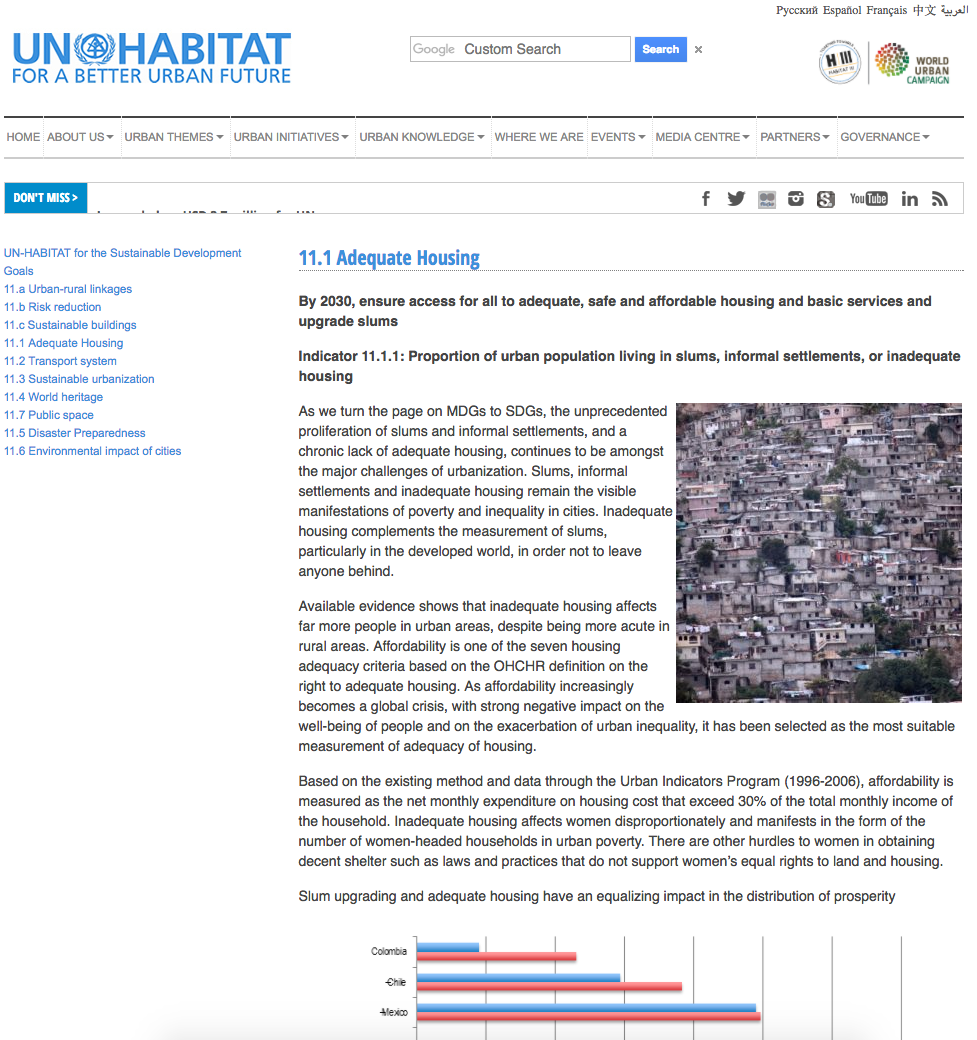Resource information
As we turn the page on MDGs to SDGs, the unprecedented proliferation of slums and informal settlements, and a chronic lack of adequate housing, continues to be amongst the major challenges of urbanization. Slums, informal settlements and inadequate housing remain the visible manifestations of poverty and inequality in cities. Inadequate housing complements the measurement of slums, particularly in the developed world, in order not to leave anyone behind.
Available evidence shows that inadequate housing affects far more people in urban areas, despite being more acute in rural areas. Affordability is one of the seven housing adequacy criteria based on the OHCHR definition on the right to adequate housing. As affordability increasingly becomes a global crisis, with strong negative impact on the well-being of people and on the exacerbation of urban inequality, it has been selected as the most suitable measurement of adequacy of housing.
Based on the existing method and data through the Urban Indicators Program (1996-2006), affordability is measured as the net monthly expenditure on housing cost that exceed 30% of the total monthly income of the household. Inadequate housing affects women disproportionately and manifests in the form of the number of women-headed households in urban poverty. There are other hurdles to women in obtaining decent shelter such as laws and practices that do not support women’s equal rights to land and housing.
Slum upgrading and adequate housing have an equalizing impact in the distribution of prosperity

